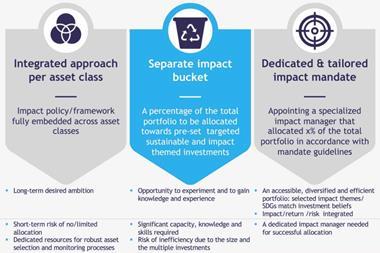The Global Impact Investing Network (GIIN) has launched the beta version of its first benchmark that will allow investors to analyse and compare the impact performance of their investments against that of their peers and relative to global goals.
The first in a series of benchmarks that will launch in the IRIS+ system is for financial inclusion, with agriculture and energy next in line. IRIS+ is an impact measurement and management system developed and maintained by the GIIN.
According to the GIIN, investors may use the impact performance benchmarks to inform portfolio construction and set impact targets, among other things.
To develop the beta version of the first IRIS+ impact performance benchmark, the GIIN worked with a design team of 13 asset managers who invest, through both debt and equity, in a diverse range of financial service providers in both emerging and developed markets.
The asset managers include BlueOrchard Finance, LeapFrog Investments, and Nuveen, the investment manager of TIAA.
“The beta launch of the GIIN’s IRIS+ impact performance benchmark marks a big milestone, not just for the GIIN, but for the entire impact investing market and the financial market more broadly,” said Amit Bouri, chief executive officer and co-founder of the GIIN.
“Our goal is for impact performance benchmarks to play the same role that financial benchmarks play in investing, which is to create a mechanism by which investors can push themselves to achieve superior performance. We want every investor waking up every day thinking about how they can deliver more impact, whether that is in their local communities or around the world.”
Access to the full dynamic version of the new benchmark is currently limited to a select group of investors, but all investors can view a static version on the IRIS+ website, GIIN said.
Signed-up IRIS+ users include Aberdeen, Affiliated Managers Group, Amundi, Aviva Investors, Christian Super, Insight Investment, Nuveen, PGGM, and Schroders.
The full financial inclusion benchmark, in the beta version, covers six key performance indicators, such as ‘clients actively using responsible financial services’, that the GIIN deemed relevant for comparative purposes and for which there was sufficient data quantity and quality.
Each KPI offers several impact performance figures “to reflect nuanced angles of impact performance”: investment-weighted figure, scale of change (volume), and pace of change (percent).
Read the digital edition of IPE’s latest magazine





























No comments yet